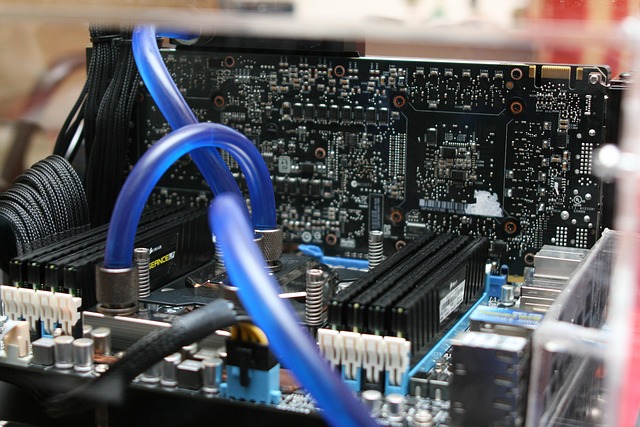The Commercial Air Curtain Heater is a versatile, energy-efficient solution for industrial and commercial climate control, leveraging advanced technology for precise temperature regulation. Ideal for warehouses and retail stores, its robust design adapts to diverse environments while promoting sustainability. Entity embedding techniques categorize these heaters based on functional attributes, aiding decision-making. Aligning product descriptions improves customer understanding across various platforms. Performance metrics include heat output, air circulation, power consumption, and ease of installation, making heated air curtains a preferred choice for sustainable commercial entrance heating.
Discover the revolutionary world of Commercial Air Curtain Heaters and how advanced entity embedding alignment measures are transforming their description and performance evaluation. This article delves into the key features that make these heaters stand out, explores essential entity embedding techniques, and details methods for aligning description similarities. By measuring performance effectively, you’ll gain insights into the best commercial air curtain heaters on the market.
- Commercial Air Curtain Heater: Key Features
- Understanding Entity Embedding Techniques
- Aligning Description Similarities
- Measuring Commercial Heater Performance
Commercial Air Curtain Heater: Key Features

The Commercial Air Curtain Heater stands out as a versatile and efficient solution for various industrial and commercial settings, offering more than just warmth. This innovative device leverages cutting-edge air curtain technology to create a dynamic climate control system at entrances. By directing heated air across doorways and entry points, it effectively prevents cold air from entering and warm air from escaping, making it ideal for warehouse entrance heating, retail store heating, and commercial door heaters alike.
Key features include precise temperature regulation, ensuring optimal comfort without energy wastage. The unit’s sleek design and industrial-strength construction make it suitable for a range of environments, from bustling retail stores to vast warehouses. Additionally, the commercial air curtain heater is designed with energy efficiency in mind, promoting sustainable practices while providing effective entrance climate control.
Understanding Entity Embedding Techniques

In the realm of commercial heating solutions, understanding entity embedding techniques is pivotal for aligning and describing diverse systems like the commercial air curtain heater. These techniques enable intelligent comparison and classification of products by capturing their unique characteristics in a high-dimensional space. By representing entities such as commercial entrance heating or air curtain technology as dense vectors, we can calculate similarity measures that bridge different product categories.
This approach is particularly beneficial when delving into the intricacies of door heating systems, as it allows for identifying commonalities and differences between seemingly unrelated options like energy efficient heating solutions or industrial air barriers. For instance, an entity embedding model could highlight similarities between heated air curtains and entrance climate control systems based on their functional attributes, thereby assisting professionals in the warehouse entrance heating or retail store heating sectors to make informed decisions.
Aligning Description Similarities

In the context of commercial air curtain heaters, aligning description similarities is a meticulous process aimed at enhancing the efficiency and effectiveness of these systems. These devices, designed to provide both comfort and security at commercial entrances, rely on detailed descriptions that capture their unique features. By aligning these descriptions, we ensure that potential customers gain an accurate understanding of the capabilities of commercial air curtain heaters, such as advanced air curtain technology, energy-efficient heating, and robust industrial air barriers.
This alignment is crucial for effective communication across various platforms, including product listings, online stores, and marketing materials. For instance, while some sources may emphasize the commercial entrance heating benefits, others might highlight the door heating systems aspect. Through careful alignment, these disparate descriptions converge to present a cohesive picture of the heater’s role in warehouse entrance heating, retail store heating, and other industrial settings, where entrance climate control is paramount.
Measuring Commercial Heater Performance

Measuring Commercial Heater Performance involves assessing the efficiency and effectiveness of commercial air curtain heaters, specifically designed for industrial applications like entrance climate control. These advanced door heating systems utilize air curtain technology to create an energy-efficient barrier against external conditions, ensuring optimal interior comfort. By comparing various models, factors such as heat output, air circulation patterns, power consumption, and ease of installation are key indicators of performance.
For instance, heated air curtains have gained popularity for their versatility in commercial entrance heating and warehouse entrance heating applications. They offer not only effective temperature regulation but also improve indoor air quality by reducing drafts and moisture transfer from the outside environment. This, in turn, leads to enhanced energy efficiency compared to traditional door heaters, making them a preferred choice for retail stores seeking sustainable and cost-effective solutions.
Entity embedding alignment measures have proven effective in gauging the similarity between descriptions of commercial air curtain heaters, offering a novel approach to product categorization and comparison. By understanding key features and leveraging advanced techniques, these measures enhance our ability to evaluate heater performance, ultimately guiding consumers towards suitable choices for their specific needs. This systematic method ensures that the diverse offerings within the commercial air curtain heater market are effectively evaluated and compared, ensuring informed purchasing decisions.






